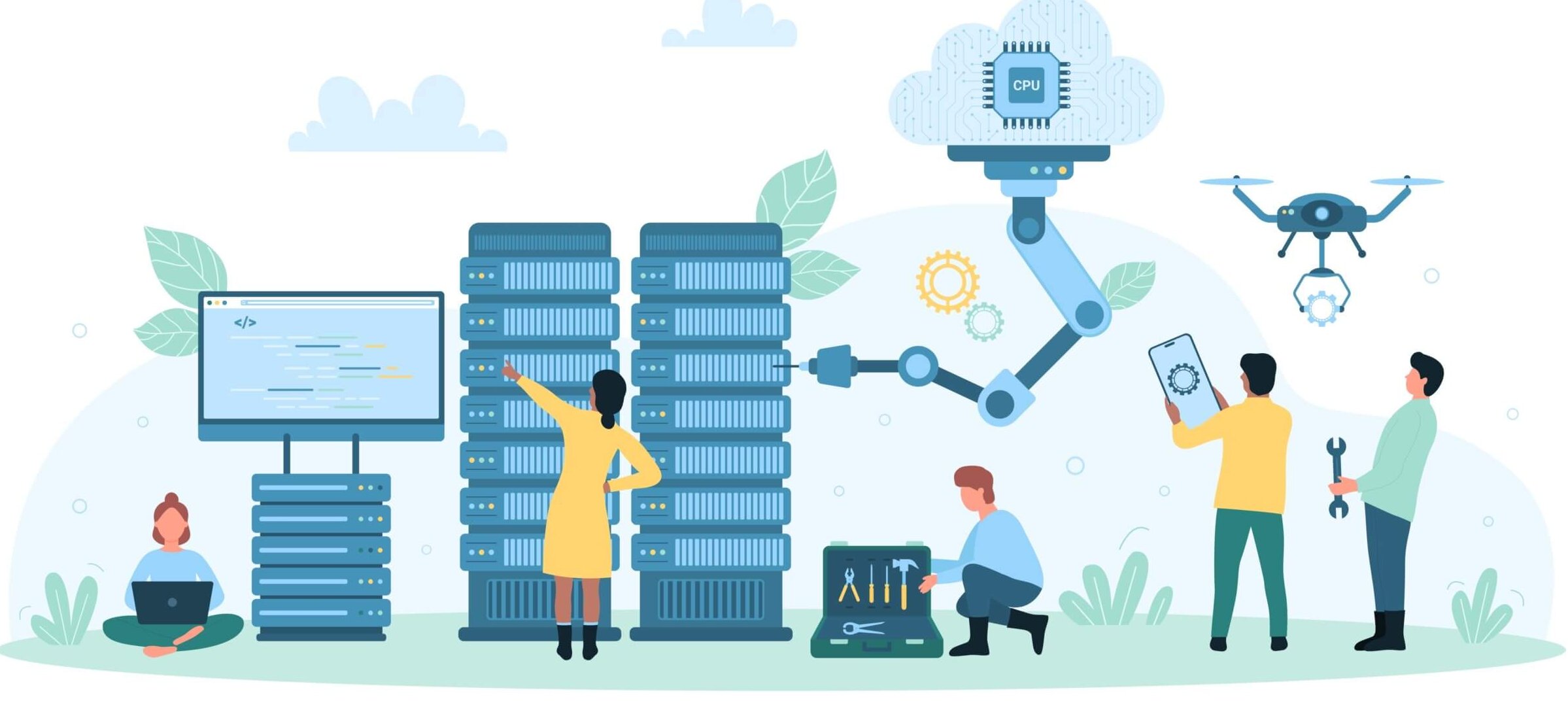Infrastructure performance management (IPM) is the process and associated tools for ensuring the overall health of your entire IT ecosystem so it operates at optimal levels. Because your infrastructure supports your entire enterprise—from daily operations to strategic initiatives—the stakes are high. There are seven key areas that you need to master to maintain a healthy infrastructure:
- Visibility and insights: Data about your infrastructure is at the heart of effective IPM. Without accurate and actionable information, none of the rest is possible.
- Dashboards and reporting: This is how humans—i.e., all of your stakeholders—consume the data about your infrastructure in a meaningful way.
- Metrics and monitoring: Just because you can measure something doesn’t mean you need to. It’s critical to understand the KPIs that matter and then track them on an ongoing basis.
- Alerting and troubleshooting: Of course, you’re not monitoring just for the sake of monitoring—you want the appropriate people to be notified when things go wrong and then help them fix the problem as quickly as possible.
- Optimization and testing: There is always room for improvement, whether that’s better performance, increased utilization, lower costs, or reduced risk, and you want to take advantage of every opportunity available to you.
- Capacity planning: Capacity has a direct impact on availability and performance—and also on your budget. You need to get that balance right.
- Workflow and controls integration: Managing your infrastructure performance requires you to take actions and make changes. You want these efforts to be easy for your team to implement within any governance or regulatory framework applicable to your business.
Here is a checklist of capabilities and best practices—categorized into the seven key areas—to help you maximize IPM effectiveness for your organization.
Visibility and insights
- Maximize the breadth of data by natively integrating with hosts, switches, and storage arrays.
- Maximize the depth of data by collecting high-fidelity data (not data that is averaged or sampled) across compute, storage, and network.
- Create a comprehensive topology view of your infrastructure that allows you to see all resources supporting an application with an easy way to understand resource health and utilization at a glance.
- Create a view of your infrastructure that allows you to filter and drill down in various ways, e.g., set of applications, event status level, region, etc. This includes getting an event-level view—across all your data centers, across all regions—at a glance, with the ability to drill down from a region to a data center to individual applications within the data center.
- Leverage infrastructure analytics that are application-centric; that is, they understand how workloads are combined into a service and how multiple services are combined to operate as an application.
Dashboards and reporting
- Leverage highly customizable dashboards that contextualize infrastructure health and performance insights. Look for these key capabilities:
- Group applications by tier based on criticality.
- Create dashboards for individual applications or components.
- Create at-a-glance views (e.g., via color coding) to quickly see current vs. benchmarked performance.
- Send dashboard details in various formats (email, image, etc.).
- Create, schedule, and email reports that deliver the details critical for different stakeholder teams.
- Present data sets from multiple sources on the same report or dashboard that are time-aligned and synchronized to enable quick correlation of workload changes and impacts, anomalies and their downstream effects, and historical data reviews.
Metrics and monitoring
- Establish a performance baseline for your infrastructure to understand what constitutes normal performance.
- Monitor all critical infrastructure components, including servers, storage systems, network devices, and applications.
- Measure essential performance, utilization, capacity, and health metrics across your entire infrastructure.
- Create a heat map that shows how all compute nodes are performing in all your infrastructure environments (on premises, public cloud, private cloud, etc.).
- Monitor traffic to identify the busy networks in terms of resource usage that may need to be rebalanced.
- Understand how storage for critical applications is performing on the back end, including read-completion times for applications.
- Use advanced analytics and AI/ML to correlate and identify patterns in performance data to predict potential issues before they occur.
- Automate monitoring and analysis to reduce the burden on your IT team.
- Automatically generate cases with recommended solutions in response to detected anomalies.
Alerting and troubleshooting
- Set up alerts for real-time notification of events. These could include:
- Critical events such as when a server goes down or when the response time of an application exceeds a certain threshold.
- Variances from defined conditions that could indicate the infrastructure is not operating at peak efficiency.
- Configure alerts to provide important information such as how often the event has happened and how far conditions went outside standard performance.
- Create workflows to automatically open a case once an alarm is triggered and include recommended steps to resolve it.
- Consolidate related alerts into a single case to simplify and speed response.
- Leverage AI-powered recommendations to speed the resolution process, including:
- Get specific recommended actions based on current performance.
- Get auto-generated scripts that can be linked within your ITSM tool to help perform the recommended actions.
- See the predicted outcome of the recommendation before executing the action.
Optimization and testing
- Identify workloads to rebalance to improve resource utilization based on SLA requirements.
- Identify opportunities to consolidate servers or upgrade hardware to improve performance.
- Optimize how applications utilize resources on the back end—hardware, VMs, etc.—to gain capex efficiencies.
- Detect hotspots that could lead to performance issues or high resource consumption.
- Get recommendations for storage optimization, such as balancing across storage arrays.
Capacity planning
- Practice predictive capacity management:
- Understand how much data is being stored and how efficiently it’s stored.
- Identify under- or over-allocated capacity throughout the infrastructure.
- Forecast when to order additional capacity based on anticipated growth rates.
- Purchase only the capacity you need when you need it.
- Avoid premature hardware refreshes to minimize unnecessary capex spend:
- Make replacement decisions based on actual health to extend life beyond standard refresh cycles.
- Eliminate expensive blanket refreshes without compromising application and workload performance.
Workflow and controls integration
- Create a unified, collaborative workflow across all your infrastructure services.
- Integrate with ITSM governance for downstream execution.
- Keep infrastructure elements up to date by aligning IPM with your CMDB.
- Ensure compliance with all industry regulations and internal policies.
Check all the IPM boxes with Virtana
Following this IPM checklist will help ensure that your IT infrastructure is always performing at peak levels—enabling your business to operate more efficiently and avoid costly downtime. Virtana Infrastructure Performance Management helps you check all the boxes. It’s the only solution that combines massive ingest of wire, machine, and ecosystem data with AIOps, ML, and data-driven analytics to give you observability into the performance and availability of your hybrid cloud infrastructure. The fully integrated performance and availability management platform delivers deep visibility, real-time data correlation, and actionable insights. Request a trial

James Harper
Head of Product Marketing, Virtana




